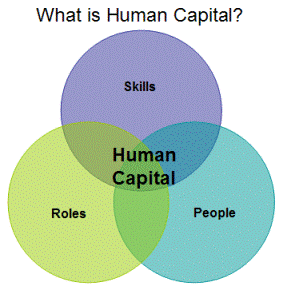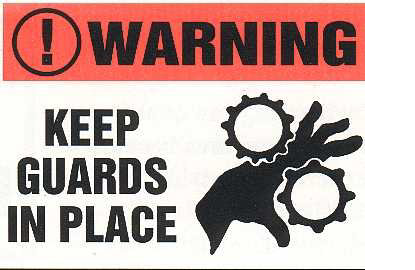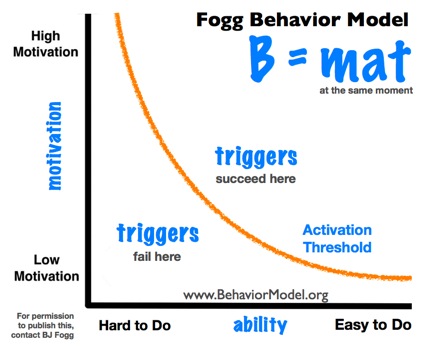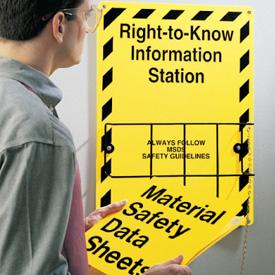 In today’s globally integrated, tightly regulated, and increasingly competitive business environment, one critical success factor stands out: people. Your people represent one of your company’s most significant investments, and they provide you with a big opportunity to gain competitive advantage.
In today’s globally integrated, tightly regulated, and increasingly competitive business environment, one critical success factor stands out: people. Your people represent one of your company’s most significant investments, and they provide you with a big opportunity to gain competitive advantage.
Tag: risk management
Portable Ladder Safety
 Falls from portable ladders (step, straight, combination and extension) are one of the leading causes of occupational fatalities and injuries.
Falls from portable ladders (step, straight, combination and extension) are one of the leading causes of occupational fatalities and injuries.
- Read and follow all labels/markings on the ladder.
- Avoid electrical hazards! – Look for overhead power lines before handling a ladder. Avoid using a metal ladder near power lines or exposed energized electrical equipment.
- Always inspect the ladder prior to using it. If the ladder is damaged, it must be removed from service and tagged until repaired or discarded.
- Always maintain a 3-point (two hands and a foot, or two feet and a hand) contact on the ladder when climbing. Keep your body near the middle of the step and always face the ladder while climbing (see diagram).
- Only use ladders and appropriate accessories (ladder levelers, jacks or hooks) for their designed purposes.
- Ladders must be free of any slippery material on the rungs, steps or feet.
- Do not use a self-supporting ladder (e.g., step ladder) as a single ladder or in a partially closed position.
- Do not use the top step/rung of a ladder as a step/rung unless it was designed for that purpose.
- Use a ladder only on a stable and level surface, unless it has been secured (top or bottom) to prevent displacement.
- Do not place a ladder on boxes, barrels or other unstable bases to obtain additional height.
- Do not move or shift a ladder while a person or equipment is on the ladder.
- An extension or straight ladder used to access an elevated surface must extend at least 3 feet above the point of support (see diagram). Do not stand on the three top rungs of a straight, single or extension ladder.
- The proper angle for setting up a ladder is to place its base a quarter of the working length of the ladder from the wall or other vertical surface (see diagram).
- A ladder placed in any location where it can be displaced by other work activities must be secured to prevent displacement or a barricade must be erected to keep traffic away from the ladder.
- Be sure that all locks on an extension ladder are properly engaged.
- Do not exceed the maximum load rating of a ladder. Be aware of the ladder’s load rating and of the weight it is supporting, including the weight of any tools or equipment.
America’s High Blood Pressure Burden
 High Blood Pressure is often referred to as “The Silent Killer”. Here are the facts:
High Blood Pressure is often referred to as “The Silent Killer”. Here are the facts:
- About 1 in 3 U.S. adults—an estimated 68 million people—has high blood pressure.
- 69% of people who have a first heart attack, 77% of people who have a first stroke, and 74% of people with chronic heart failure have high blood pressure.
- High blood pressure is also a major risk factor for kidney disease.
- High blood pressure was listed as a primary or contributing cause of death for about 348,000 Americans in 2008.
- Costs directly attributable to high blood pressure for the nation total almost $131 billion annually in direct medical expenses and $25 billion in lost productivity.
- Less than half (46%) of people with high blood pressure have their condition under control.
- Almost 30% of American adults have prehypertension—blood pressure numbers that are higher than normal, but not yet in the high blood pressure range. Prehypertension raises your risk of developing high blood pressure.
- Reducing average population sodium intake from 3,300 mg to 2,300 mg per day may reduce cases of high blood pressure by 11 million and save 18 billion health care dollars annually.
Safety – Begin With The End In Mind
 The Second Habit in Steven Covey’s book The Seven Habits of Highly Effective People is Begin With the End in Mind. I think that is a great habit to apply to workplace safety. I have attached an Annual Safety Audit to the end of this message anyone can use as a road map to an effective safety strategy. It’s been my experience that most employers want to keep their employees healthy and safe because it’s not only good business but also the right thing to do.
The Second Habit in Steven Covey’s book The Seven Habits of Highly Effective People is Begin With the End in Mind. I think that is a great habit to apply to workplace safety. I have attached an Annual Safety Audit to the end of this message anyone can use as a road map to an effective safety strategy. It’s been my experience that most employers want to keep their employees healthy and safe because it’s not only good business but also the right thing to do.
Click on the link to download a copy of Annual Safety Audit:
Machine Guarding
 Moving machine parts have the potential to cause severe workplace injuries, such as crushed fingers or hands, amputations, burns, or blindness. Safeguards are essential for protecting workers from these preventable injuries. Any machine part, function, or process that may cause injury must be safeguarded. When the operation of a machine or accidental contact injure the operator or others in the vicinity, the hazards must be eliminated or controlled. This page contains general information on the various hazards of mechanical motion and techniques for protecting workers.
Moving machine parts have the potential to cause severe workplace injuries, such as crushed fingers or hands, amputations, burns, or blindness. Safeguards are essential for protecting workers from these preventable injuries. Any machine part, function, or process that may cause injury must be safeguarded. When the operation of a machine or accidental contact injure the operator or others in the vicinity, the hazards must be eliminated or controlled. This page contains general information on the various hazards of mechanical motion and techniques for protecting workers.
Roles of HR Professionals in Risk Management
![HR Functions[4]](http://www.riskmanagement365.com/wp-content/uploads/2012/12/hr-functions4.gif?w=143) The “people” risk in business is significant and role of HR Professionals to manage this risk varies by organization. The challenge is that risk area’s and responsibilities are often very siloed. The key is risk management should be an integrated effort, with executive level support, that enhances the strategic goals and growth of the organization. HR professionals role is to participate in risk management by assessing risk and creating HR policies to prevent or mitigate loss and ensure business continuity.
The “people” risk in business is significant and role of HR Professionals to manage this risk varies by organization. The challenge is that risk area’s and responsibilities are often very siloed. The key is risk management should be an integrated effort, with executive level support, that enhances the strategic goals and growth of the organization. HR professionals role is to participate in risk management by assessing risk and creating HR policies to prevent or mitigate loss and ensure business continuity.
What Triggers Behavior Change?
 BJ Fogg founder of the Persuasive Technology Lab at Stanford University designed a behavior model to serve as a guide to identify what stops people from performing desirable behaviors. The Fogg Behavior Model shows that three elements must converge at the same moment for a behavior to occur:
BJ Fogg founder of the Persuasive Technology Lab at Stanford University designed a behavior model to serve as a guide to identify what stops people from performing desirable behaviors. The Fogg Behavior Model shows that three elements must converge at the same moment for a behavior to occur:
- Motivation
- Ability
- Trigger
When a behavior does not occur, at least one of those three elements is missing.
When designing health and safety processes it’s important to include all three elements to drive desired behavior change. To be successful you need participation, education and encouragement built into the process.
Workplace Health Programs Increase Productivity
Workplace health programs can increase productivity
In general, healthier employees are more productive.
- Healthier employees are less likely to call in sick or use vacation time due to illness
- Companies that support workplace health have a greater percentage of employees at work every day
- Because employee health frequently carries over into better health behavior that impact both the employee and their family (such as nutritious meals cooked at home or increased physical activity with the family), employees may miss less work caring for ill family members as well
- Similarly, workplace health programs can reduce presenteeism — the measurable extent to which health symptoms, conditions, and diseases adversely affect the work productivity of individuals who choose to remain at work
The cost savings of providing a workplace health program can be measured against absenteeism among employees, reduced overtime to cover absent employees, and costs to train replacement employees.
via CDC – Workplace Health – Business Case – Benefits of Health Program – Increase Productivity.
What’s Next After Lean?
Doing more with less by employing “lean thinking.” Lean manufacturing involves never ending efforts to eliminate or reduce ‘muda” (Japanese for waste or any activity that consumes resources without adding value) in design, manufacturing, distribution, and customer service processes.
So what’s “beyond lean” or the “next lean”. I have found that applying “lean” thinking to employee health and productivity eliminates waste in the cost of health care, work comp, absenteeism and presenteeism (at work but not productive). To be successful you need a process or road map. The process is the five steps of risk management. They are:
- Identify Risk
- Analyze Data
- Control Risk
- Finance Risk
- Measure Results
Don’t make the mistake of thinking insurance is risk management. Insurance is not risk management; in fact it is the 4th step of the process. Skipping (or poor execution of) the first 3 steps leads the waste (higher cost) and poor results in step 5.
Payroll, Benefits and Work Comp are typically the highest cost a business has yet in many cases this area is often overlooked for waste.
Hazard Communication | What is Hazard Communication?
 Chemicals pose a wide range of health hazards (such as irritation, sensitization, and carcinogenicity) and physical hazards (such as flammability, corrosion, and reactivity). OSHA’s Hazard Communication Standard (HCS) is designed to ensure that information about these hazards and associated protective measures is disseminated. This is accomplished by requiring chemical manufacturers and importers to evaluate the hazards of the chemicals they produce or import, and to provide information about them through labels on shipped containers and more detailed information sheets called material safety data sheets (MSDSs). All employers with hazardous chemicals in their workplaces must prepare and implement a written hazard communication program, and must ensure that all containers are labeled, employees are provided access to MSDSs, and an effective training program is conducted for all potentially exposed employees.
Chemicals pose a wide range of health hazards (such as irritation, sensitization, and carcinogenicity) and physical hazards (such as flammability, corrosion, and reactivity). OSHA’s Hazard Communication Standard (HCS) is designed to ensure that information about these hazards and associated protective measures is disseminated. This is accomplished by requiring chemical manufacturers and importers to evaluate the hazards of the chemicals they produce or import, and to provide information about them through labels on shipped containers and more detailed information sheets called material safety data sheets (MSDSs). All employers with hazardous chemicals in their workplaces must prepare and implement a written hazard communication program, and must ensure that all containers are labeled, employees are provided access to MSDSs, and an effective training program is conducted for all potentially exposed employees.
via Safety and Health Topics | Hazard Communication | What is Hazard Communication?.

